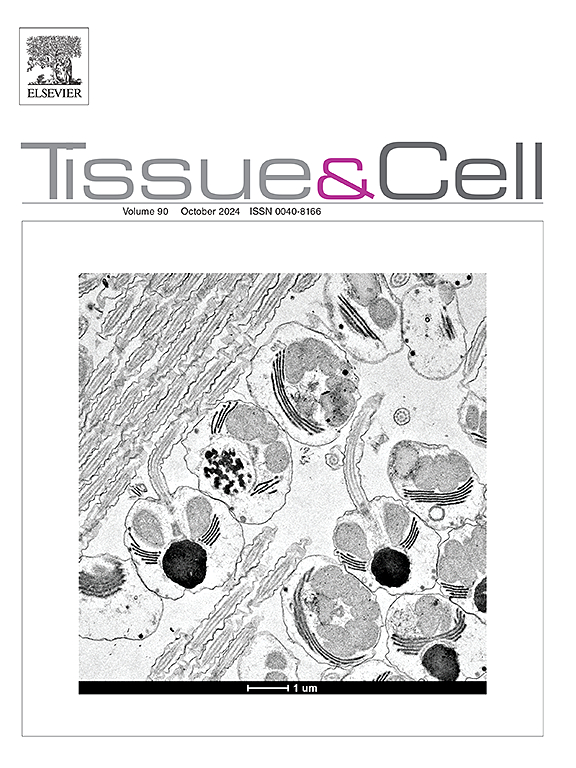Tauroursodeoxycholic acid inhibits endothelial-mesenchymal transition in high glucose-treated human umbilical vein endothelial cells
IF 2.7
4区 生物学
Q1 ANATOMY & MORPHOLOGY
引用次数: 0
Abstract
The high glucose-induced endothelial-mesenchymal transition (EndMT) may be the initial and underlying mechanism of diabetic vascular complications. Although tauroursodeoxycholic acid (TUDCA) plays various protective roles in diabetes and its complications, it’s unclear whether TUDCA inhibits the high glucose-induced EndMT. In this study, human umbilical vein endothelial cells (HUVECs) were treated with high glucose and intervened with TUDCA. The mRNA expression of fibroblast as well as endothelial markers, fibroblast specific protein 1 (FSP1), collagen I, CD31 and calcium adhesion protein 5, was detected. The protein content of FSP1 and CD31 was ascertained, with FSP1 distribution illustrated. The scratch assay was performed to evaluate the migratory ability of HUVECs. The protein content of TGF-β1 and Smad3, the distribution of Smad3 and the binding of Smad3 to the gene promoter of FSP1, were measured. The results firstly showed that TUDCA reversed the expression of EndMT-related genes in high glucose-treated HUVECs. Furthermore, TUDCA reduced FSP1 content with elevation in CD31, inhibited FSP1 distribution and attenuated morphological changes of high glucose-treated HUVECs. Meanwhile, TUDCA inhibited the high glucose-enhanced migratory ability of HUVECs. Mechanically, TUDCA prevented the binding of Smad3 to the gene promoter of FSP1 in high glucose-treated HUVECs, although it had little effect on the content of TGF-β1 and Smad3. In conclusion, TUDCA inhibited the high glucose-induced EndMT via preventing Smad3 from binding to the gene promoter of fibroblast markers, such as FSP1, in HUVECs.
求助全文
约1分钟内获得全文
求助全文
来源期刊

Tissue & cell
医学-解剖学与形态学
CiteScore
3.90
自引率
0.00%
发文量
234
期刊介绍:
Tissue and Cell is devoted to original research on the organization of cells, subcellular and extracellular components at all levels, including the grouping and interrelations of cells in tissues and organs. The journal encourages submission of ultrastructural studies that provide novel insights into structure, function and physiology of cells and tissues, in health and disease. Bioengineering and stem cells studies focused on the description of morphological and/or histological data are also welcomed.
Studies investigating the effect of compounds and/or substances on structure of cells and tissues are generally outside the scope of this journal. For consideration, studies should contain a clear rationale on the use of (a) given substance(s), have a compelling morphological and structural focus and present novel incremental findings from previous literature.
 求助内容:
求助内容: 应助结果提醒方式:
应助结果提醒方式:


